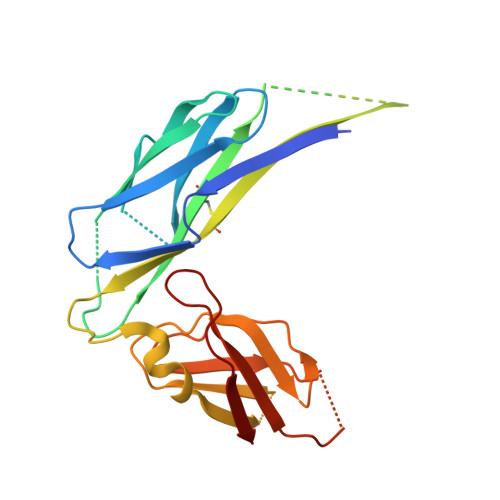Allosteric Mechanism Controls Traffic in the Chaperone/Usher Pathway.
Di Yu, X., Dubnovitsky, A., Pudney, A.F., Macintyre, S., Knight, S.D., Zavialov, A.V.(2012) Structure 20: 1861
- PubMed: 22981947
- DOI: https://doi.org/10.1016/j.str.2012.08.016
- Primary Citation of Related Structures:
4AY0, 4AYF, 4AZ8, 4B0E, 4B0M - PubMed Abstract:
Many virulence organelles of Gram-negative bacterial pathogens are assembled via the chaperone/usher pathway. The chaperone transports organelle subunits across the periplasm to the outer membrane usher, where they are released and incorporated into growing fibers. Here, we elucidate the mechanism of the usher-targeting step in assembly of the Yersinia pestis F1 capsule at the atomic level. The usher interacts almost exclusively with the chaperone in the chaperone:subunit complex. In free chaperone, a pair of conserved proline residues at the beginning of the subunit-binding loop form a "proline lock" that occludes the usher-binding surface and blocks usher binding. Binding of the subunit to the chaperone rotates the proline lock away from the usher-binding surface, allowing the chaperone-subunit complex to bind to the usher. We show that the proline lock exists in other chaperone/usher systems and represents a general allosteric mechanism for selective targeting of chaperone:subunit complexes to the usher and for release and recycling of the free chaperone.
Organizational Affiliation:
Department of Molecular Biology, Uppsala BioCenter, Swedish University of Agricultural Sciences, BMC, Box 590, SE-75324 Uppsala, Sweden.















